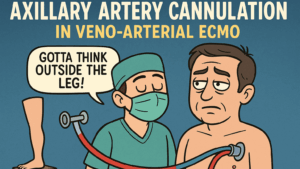Extracorporeal Cardiopulmonary Resuscitation (ECPR) is an emerging approach to cardiac arrest. We present two contrasting cases from a high-volume extracorporeal membrane oxygenation (ECMO) center (defined as greater than 30 ECMO cases per year) without a 24/7 ECPR program to highlight how to establish an ECPR program with a focus on patient selection and outcome optimization. In one case, a patient presented with cardiac arrest during initial triage for chest pain within the emergency department, and in the other case, a patient experienced an out-of-hospital cardiac arrest with prolonged no-flow and low-flow time. Despite the lack of a 24/7 ECPR program at the presenting center, both patients received an ECPR evaluation, as both patients presented while all services necessary for ECMO cannulation were available. The in-hospital cardiac arrest patient was successfully cannulated for ECMO during cardiopulmonary resuscitation and survived with few complications. The out-of-hospital cardiac arrest patient was deemed a poor candidate for ECPR and expired soon after presentation. These two cases highlight the complex decision-making in ECPR and further illustrate how to create ECPR protocols at a high-volume ECMO center before resources are available for a 24/7 ECPR program.
Key words: Extracorporeal Cardiopulmonary Resuscitation (ECPR) / Extracorporeal Membrane Oxygenation (ECMO) / Cardiac arrest
J Extra Corpor Technol 2023, 55, 185–188







